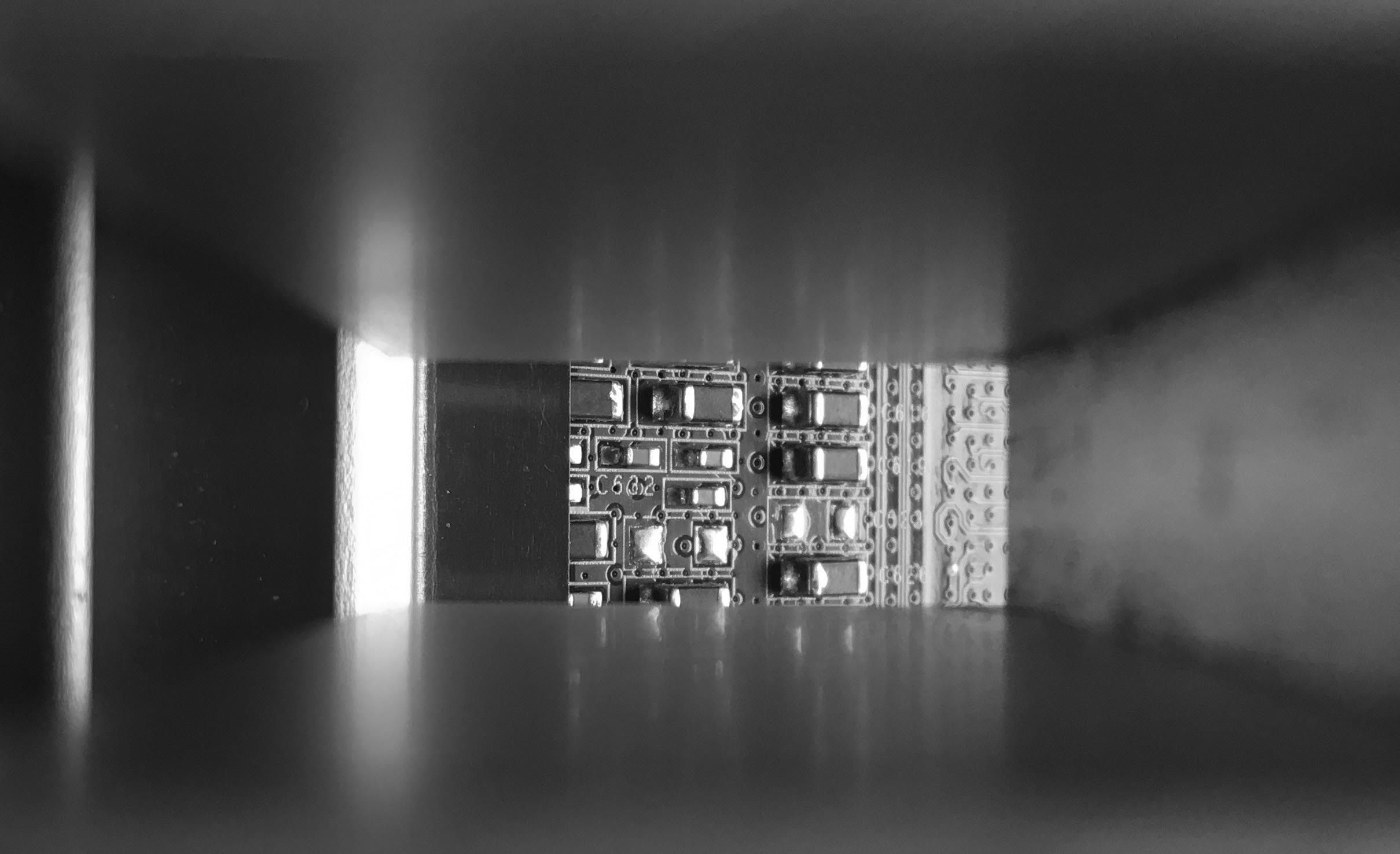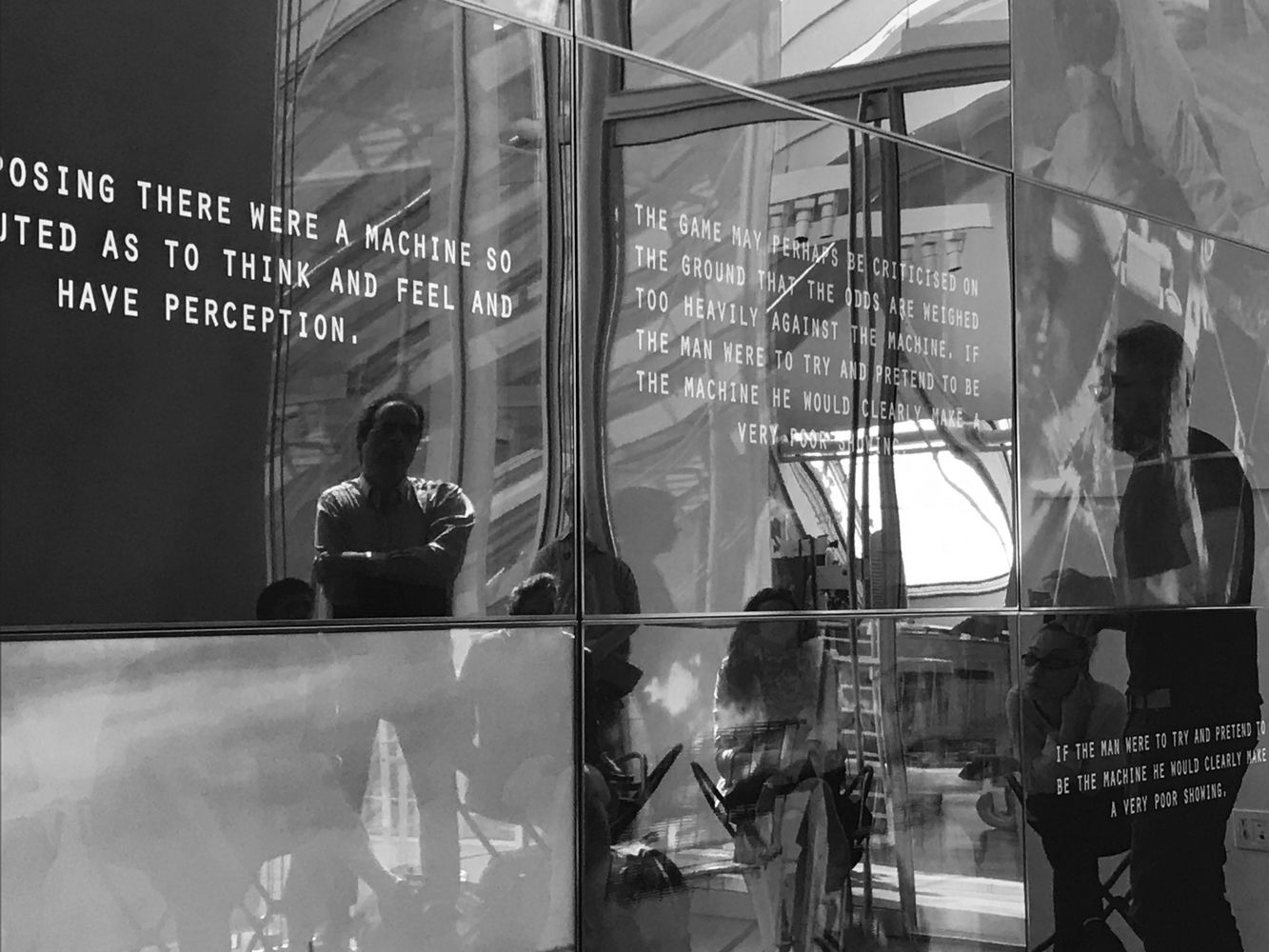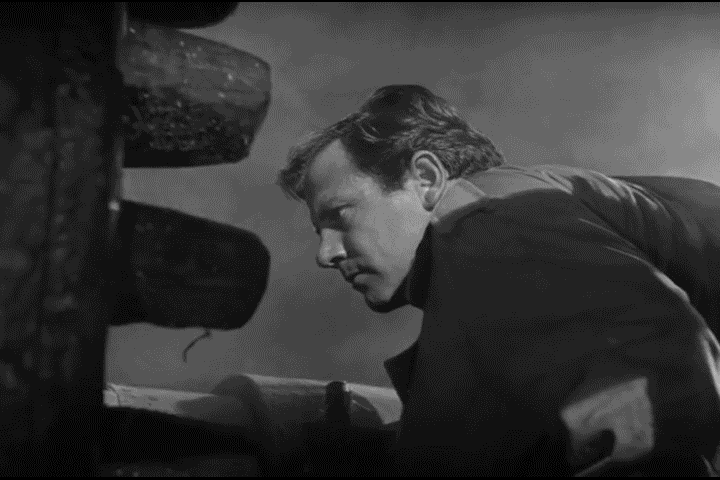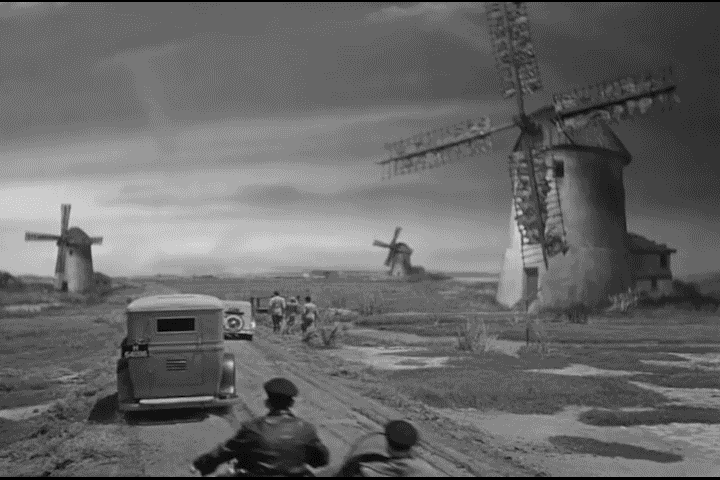Turing’s Mill
- Time
- –
- Location
- Harvard Art Museums Lightbox Gallery
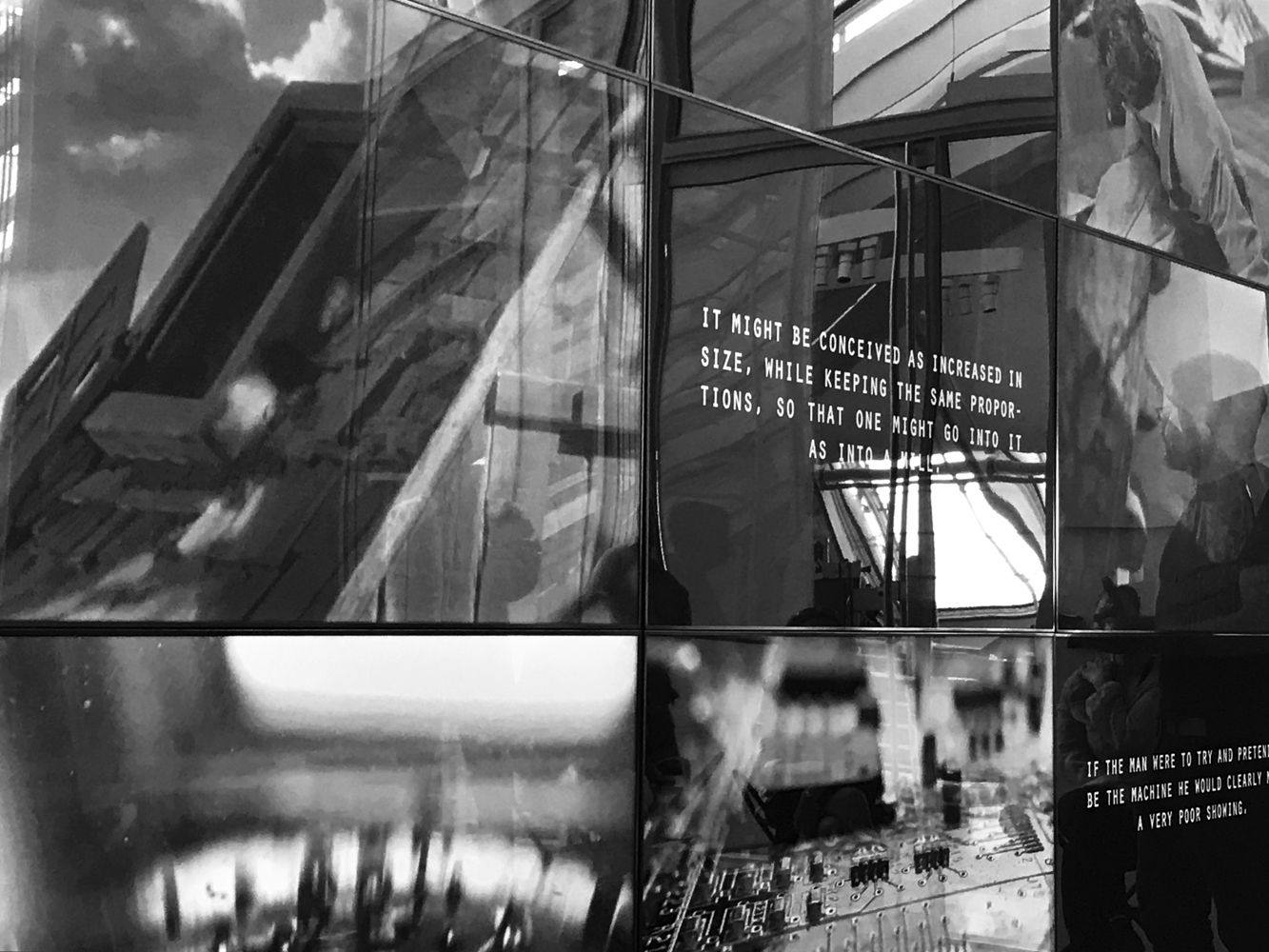
Turing’s Mill
Matthew Battles
Multi-channel video installation
2017
Wednesday, August 9, 10am-5pm
Gallery talk 3 pm
Harvard Art Museums
Lightbox Gallery
Shown in the Harvard Art Museums’ Lightbox Gallery on August 9, 2017, Turing’s Mill explored fragments from the philosophical history of machine intelligence, the work of two authors in particular: the 18th-century philosopher Wilhem Gottfried Leibniz; and Alan Turing, the 20th century mathematician and computer scientist.
In 1714, Leibniz proposed an arresting thought experiment: imagine “a machine,” he suggests, “so constituted as to think, feel, and have perception…. [I]t might be conceived as increased in size, while keeping the same proportions, so that one might go into it as into a mill…. We should, on examining its interior, find only parts acting on one another, and never anything by which to explain a perception.”
The second textual thread was drawn from Alan Turing’s essay “Computing Machinery and Intelligence” (1950), which proposes the now-famous “Turing Test” for establishing the capacity of a machine to think, feel, and perceive. For all practical purposes, Turing argues, a machine that can convince us it is capable of thinking as we do—a computer capable of passing, as it were—would be one whose capacities are tantamount to full human intelligence. Turing’s identification with the computer, as a creature destined to hide its nature in shadow and mimicry—to pass, in essence, as if “machine” were a kind of illicit gender identity—is notable, and moving.
The imagery is chiefly extracted from Foreign Correspondent (1940), directed by Alfred Hitchcock, in which Joel McCrea stars as an American journalist who disrupts a wartime spy plot. In the relevant scene, he pursues the villains to their hideout, a windmill in the Dutch countryside, where he uncovers their conspiracy. Of course, Hitchcock’s story has nothing to do with artificial intelligence or philosophy of mind. In the crucial scene, Leibniz’s thought experiment comes to mind: between moments of intrigue and discovery that drive the plot, a shadow film emerges—a cluster of mills on a windy plain, vanes turning inexorably, perhaps lost in thoughts which, tenderly and unimaginably slowly, turn over and over with infinite patience.
In the version of Turing’s Mill presented at the Harvard Art Museums, images of processors and motherboards combined with gifs extracted from Hitchcock’s film and snippets of text from Leibniz and Turing; they played across the gallery’s nine-screen array in a shifting narrative mosaic that changed slightly each time it cycles through the imagery.
Wandering the enlarged ramparts of semiconductor wafers, heatsinks, and processors, would pious watchers come any closer to unveiling the mysteries of computational intelligence? Likely not; Turing acknowledged such uncertainty in his essay. “May not machines carry out something which ought to be described as thinking,” he asks, “but which is very different from what a man does?” Our wandering hero, the trenchcoat avatar of Leibniz or Turing, is lost in the mill’s gears and shafts, searching out the uncanny intelligence—the perception, the feeling—hidden in its works.
